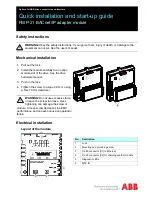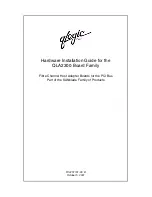
WiSnap User Manual 2.21 04112011-JF
Page
5
of
66
2
Hardware Interface
Please see the specific data sheet on the SerialIO.com website for hardware specifications and layout
information, located here:
http://serialio.com/support/wifi/Serialio_WiSnap_GSX_Super_Module_Specs_2.0.pdf
2.1
Power
2.1.1
WiSnap M1 SuRFBoard
There are two options for powering the WiSnap module directly.
DC SUPPLY:
Apply 3.3 VDC power to VBATT (pin 20), and V3.3IN (pin 21).
Tie 3.3VREG-IN (pin 18) to GROUND.
Leave 3.3V-REG-OUT (Pin 17) floating/no connect.
BATTERY:
Apply battery = 2.0 to 3.3VDC to VBATT (pin 20).
Leave V3.3IN pin 21 floating/no connect.
Tie pin 17 to pin 18. (This enables the on board battery boost 3.3V switcher).
There is a built in voltage brownout monitor which will shut down the chip when the voltage drops
below 2.0 VDC.
Warning:
Do NOT exceed these voltage ratings or damage to the module will occur!
Notes:
#1: The Sensor inputs SENS0-7 are extremely sensitive to over voltage. Under no conditions
should these pins be driven above 1.2VDC. Placing any voltage above this will permanently
damage the radio module and render it useless.
#2: Placing 5VDC or any voltage above 3.3VDC into the VDD pins of the module will
permanently damage the radio module.
#3: Placing 3.3VDC into the PIO’s while they are set as outputs will permanently damage the
module. The failure mode is a short across GND and VCC.
2.1.2
WiSnap AAA Dongle
The WiSnap AAA Dongle is powered by two AAA batteries, an external AC to 5VDC power cable, or
5VDC (only) on pin 9 of the DB9 connector. Rechargeable NiMH batteries will be trickle charged
when used with an external 5VDC (only) power source.
The power cable is center pin positive, outer cylinder GND. Input
MUST be 5 VDC
for proper
battery charging. Higher voltages can permanently damage the charger and battery.
NOTE: Although external power is possible, batteries MUST BE CONNECTED in order to
complete the circuit. Without batteries, permanent damage to the device will result.






































